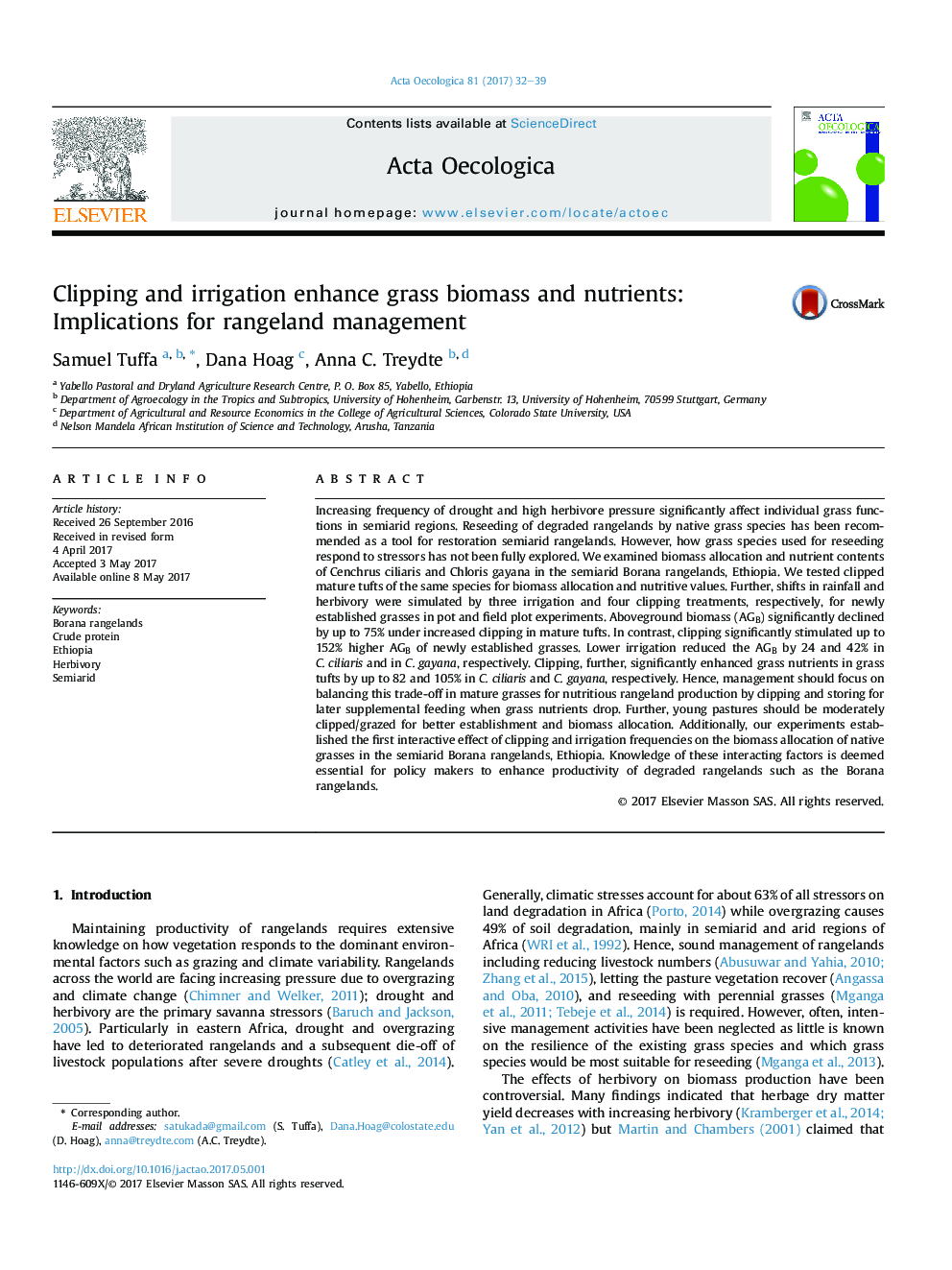| Article ID | Journal | Published Year | Pages | File Type |
|---|---|---|---|---|
| 5742483 | Acta Oecologica | 2017 | 8 Pages |
â¢Clipping significantly reduced above-ground biomass in mature tufts in contrast to young grasses.â¢Grazing pressure was only marginally important for biomass production under drought conditions.â¢Grazing must be managed during non-drought years for better biomass production.â¢Increased rainfall enhanced biomass allocation of grasses.â¢Reseeded sites should get rest from grazing or clipping for better biomass production.
Increasing frequency of drought and high herbivore pressure significantly affect individual grass functions in semiarid regions. Reseeding of degraded rangelands by native grass species has been recommended as a tool for restoration semiarid rangelands. However, how grass species used for reseeding respond to stressors has not been fully explored. We examined biomass allocation and nutrient contents of Cenchrus ciliaris and Chloris gayana in the semiarid Borana rangelands, Ethiopia. We tested clipped mature tufts of the same species for biomass allocation and nutritive values. Further, shifts in rainfall and herbivory were simulated by three irrigation and four clipping treatments, respectively, for newly established grasses in pot and field plot experiments. Aboveground biomass (AGB) significantly declined by up to 75% under increased clipping in mature tufts. In contrast, clipping significantly stimulated up to 152% higher AGB of newly established grasses. Lower irrigation reduced the AGB by 24 and 42% in C. ciliaris and in C. gayana, respectively. Clipping, further, significantly enhanced grass nutrients in grass tufts by up to 82 and 105% in C. ciliaris and C. gayana, respectively. Hence, management should focus on balancing this trade-off in mature grasses for nutritious rangeland production by clipping and storing for later supplemental feeding when grass nutrients drop. Further, young pastures should be moderately clipped/grazed for better establishment and biomass allocation. Additionally, our experiments established the first interactive effect of clipping and irrigation frequencies on the biomass allocation of native grasses in the semiarid Borana rangelands, Ethiopia. Knowledge of these interacting factors is deemed essential for policy makers to enhance productivity of degraded rangelands such as the Borana rangelands.
